We’ve just spent a day at Honda’s Tochigi proving grounds, ostensibly to drive the new Prelude hybrid coupe and the tiny Super-One electric hatch. Both are coming to Australia and you can read our first-drive reviews of the Prelude and Super-One now.
But those cars were the dessert. The main course was a series of deep-dive technical workshops and prototype drives to provide us with an insight into Honda’s next-generation hybrid systems.
This is the tech that matters. It’s what will finally give Honda a proper, no-compromise rival to the Toyota RAV4 Hybrid, and – more excitingly – it gives us our first real-world taste of what will almost certainly be the powertrain for the next-generation Civic Type R.
And for the first time, the words “hybrid” and “exciting” can be used in the same sentence without irony.
CarExpert can save you thousands on a new car. Click here to get a great deal.
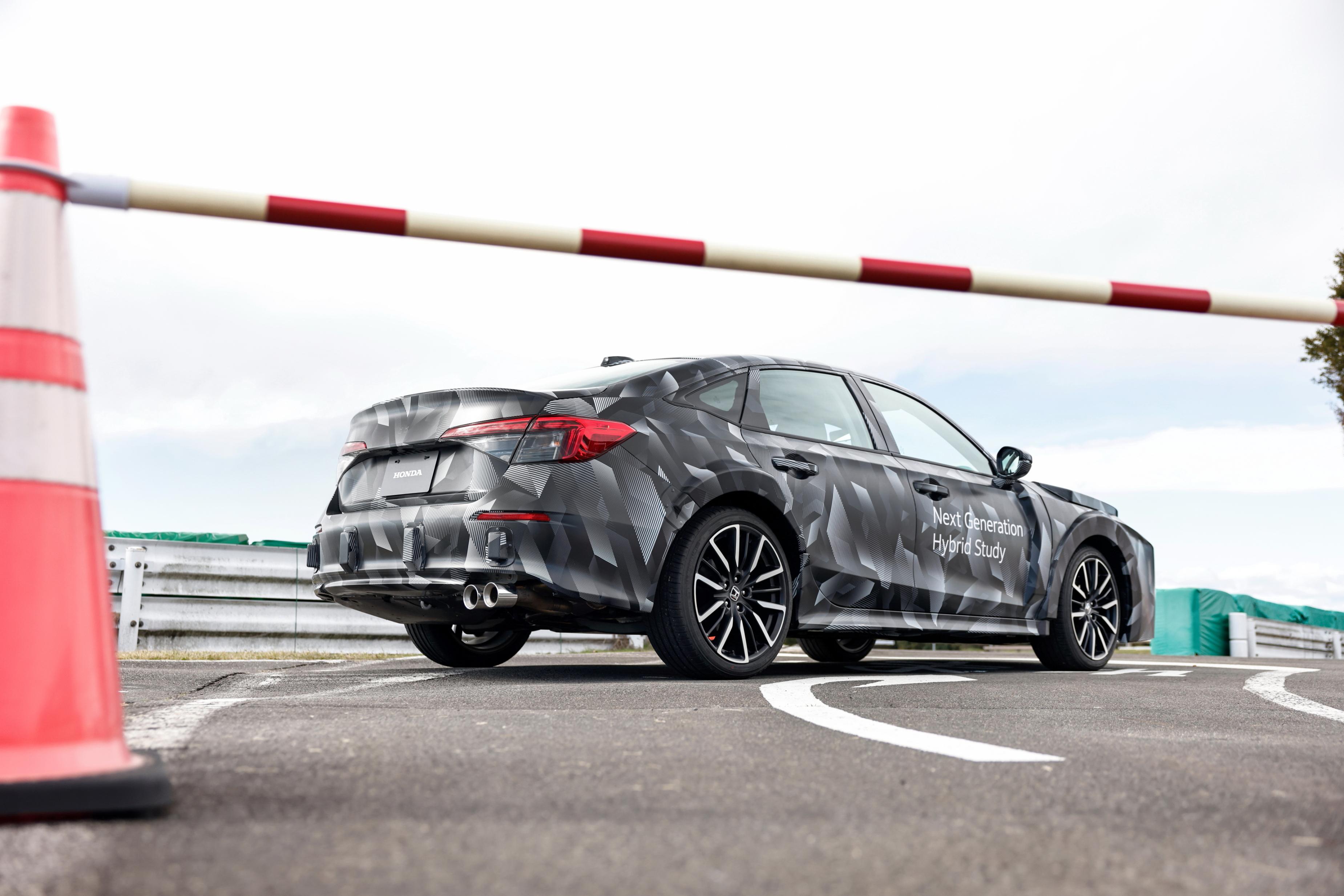
The ‘fake’ gearbox that saves the performance hybrid
Let’s be honest. Honda’s e:HEV hybrid system is clever but, for an enthusiast, it’s uninspiring. The two-motor ‘e-CVT’ design, which primarily drives the wheels with an electric motor, is efficient but results in that droning, elastic-band-on-ketamine feeling under hard acceleration.
It’s fine for a Jazz, but it would be a travesty in a performance car.
Honda knows this. And its solution, which we drove in a camouflaged ‘Next Generation Hybrid Study’ (a Civic with a face only a mother could love), is a new power unit control technology called ‘S+ Shift’.
This is the breakthrough.
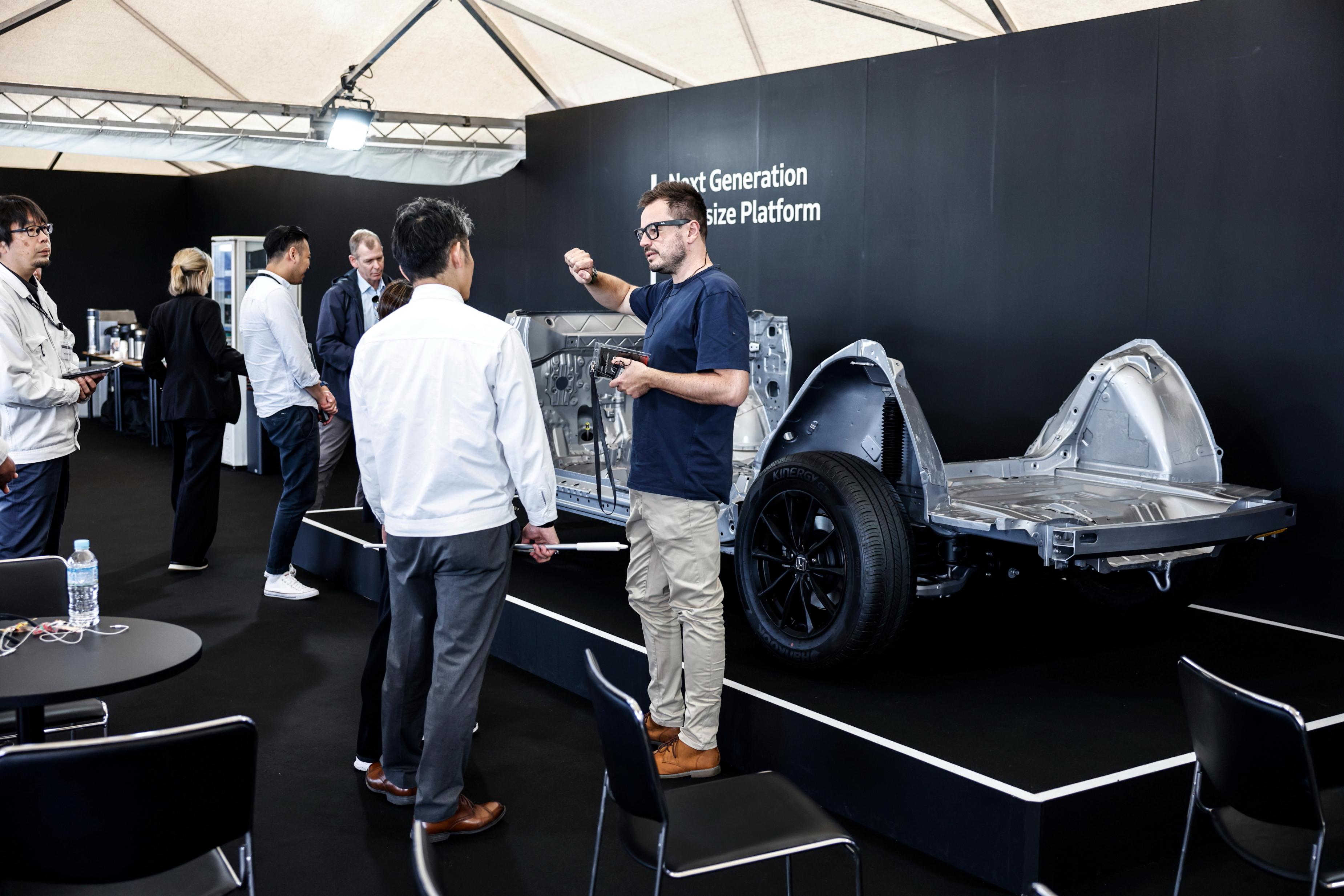
S+ Shift is a purely software-based virtual gearbox. When you put the car in Sport mode and pull a paddle, it transforms the e-CVT’s character into that of an aggressive eight-speed dual-clutch automatic transmission.
Under acceleration, the system uses the engine to drive the generator motor, which powers the main 135kW/315Nm traction motor. As you build speed, instead of a single, soul-crushing drone, the S+ Shift programming does something brilliant: to simulate an upshift, it momentarily lowers the traction motor’s output while using the generator motor to create a shift notch, perfectly syncing a drop in engine revs.
The result is a crisp, positive thump through the chassis, a change in the exhaust note, and a feeling of a physical gear change. It’s not just an audio gimmick; the power delivery actually punches with each shift.
Brake hard for a corner, and it’s even better. The system delivers perfect, rev-matched ‘downshifts’, blipping the engine and raising the revs to keep the 2.0-litre Atkinson-cycle mill in its power band, ready for you to get back on the throttle.
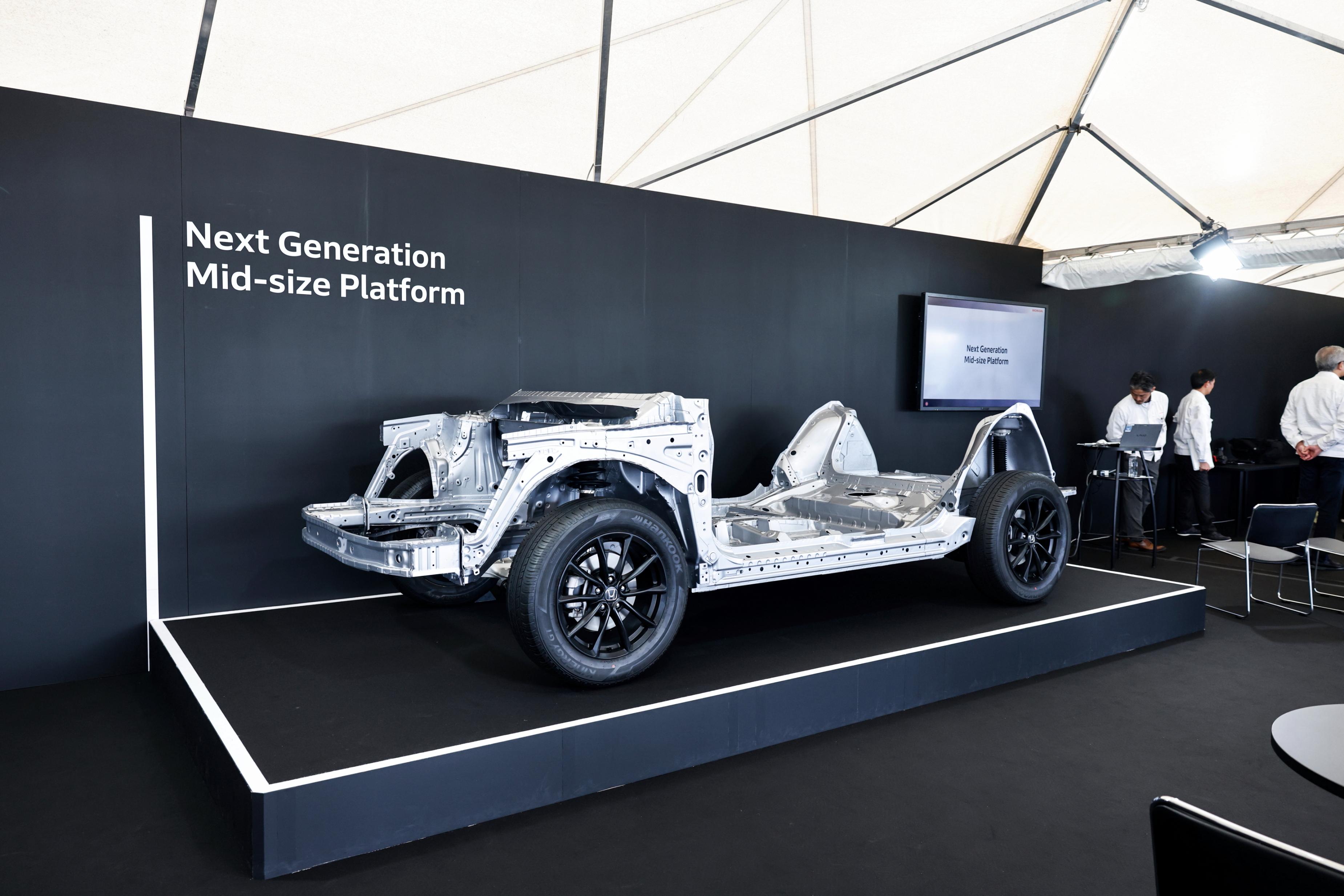
It’s the first time an e-CVT has felt genuinely engaging to drive.
Here’s the kicker. When I asked the lead engineer if this S+ Shift system could be applied to a turbocharged engine, he just smiled and said: “It is possible”.
This is the key. The biggest problem for a future hybrid-powered FL5 Civic Type R is how to handle the transmission. This is the answer. By pairing a turbo-four with this S+ Shift e:HEV system, Honda can use the electric motors to fill in any turbo lag instantly, while using the virtual gears to deliver an aggressive, tactile driving experience that enthusiasts demand.
We’ve just driven the future of the Type R, and it’s actually damn good.
Honda’s hybrid future: From 1.5L efficiency to V6 towing
While the 2.0-litre S+ Shift system was the most exciting, Honda also detailed its plans for the rest of its hybrid range, showing this isn’t a one-size-fits-all solution.
The 1.5L Workhorse (Next-gen HR-V)
We also drove a ‘Next Generation Small-size Hybrid System’ prototype, built into a current-model HR-V (or ‘Vezel’ in Japan).
This is arguably the most important engine for Honda’s volume sales. It’s a newly-developed 1.5-litre direct-injection engine focused entirely on efficiency.
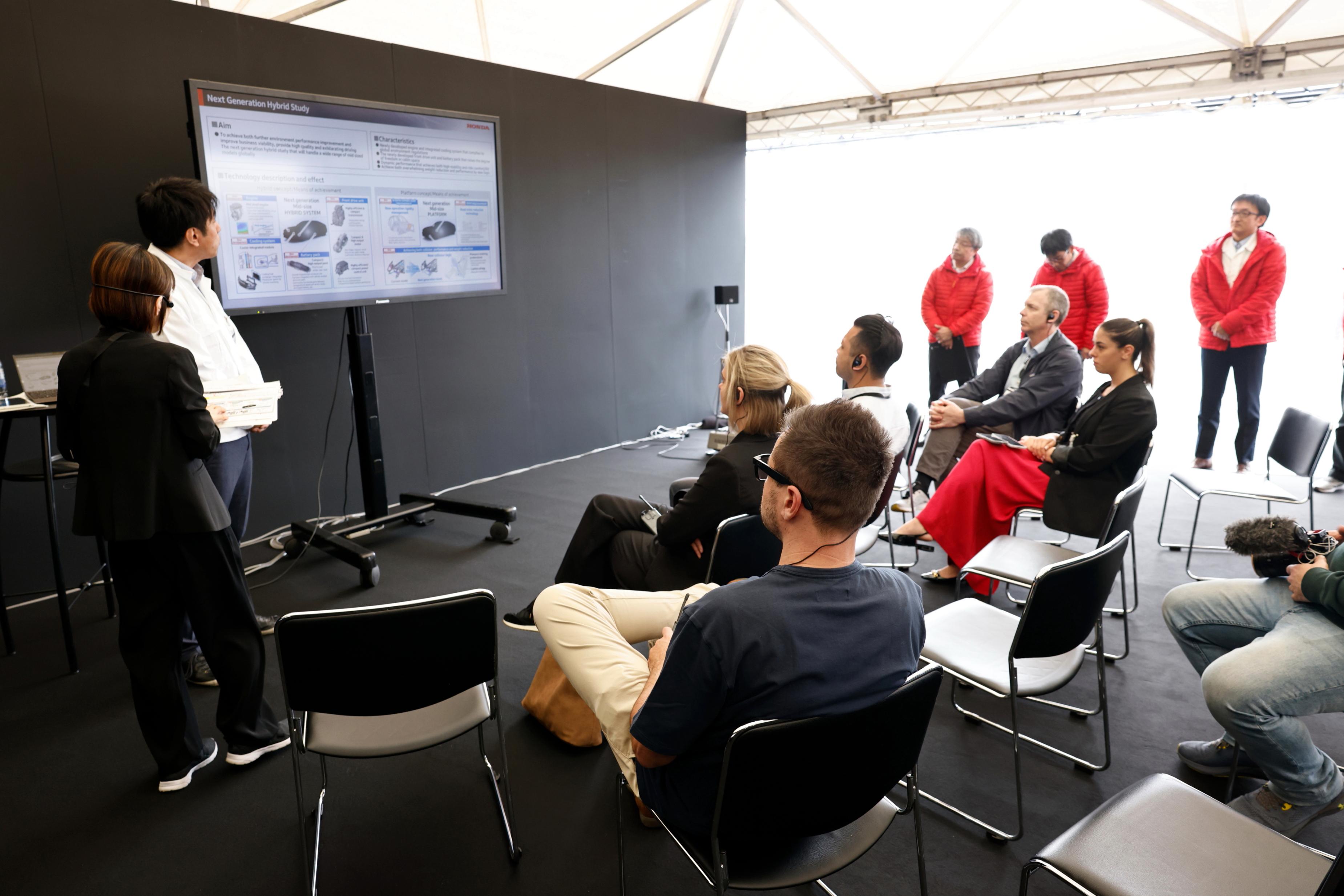
According to Honda’s technical charts, the key achievement here is an expansion of the high-efficiency range by 40 per cent compared to the current 1.5L hybrid engine.
In simple terms, the engine can now operate at its most efficient point (known as stoichiometric combustion, or the ideal air-fuel ratio) across a much wider range of speeds and loads. This was achieved through new engineering for rapid combustion, allowing it to be more frugal without sacrificing response.
Honda has also focused on NVH, fitting a more rigid crankshaft and cylinder block to reduce the thrashy, tinny noise that small hybrids are known for. On the track, it was noticeably quieter and smoother than the current HR-V e:HEV, with a less strained feel under acceleration.
The V6 Towing Rig (For America)
On a display stand was the ‘Next Generation Large-size Hybrid System’ – a newly-developed V6 engine mated to Honda’s e:HEV system and an e-axle at the rear.
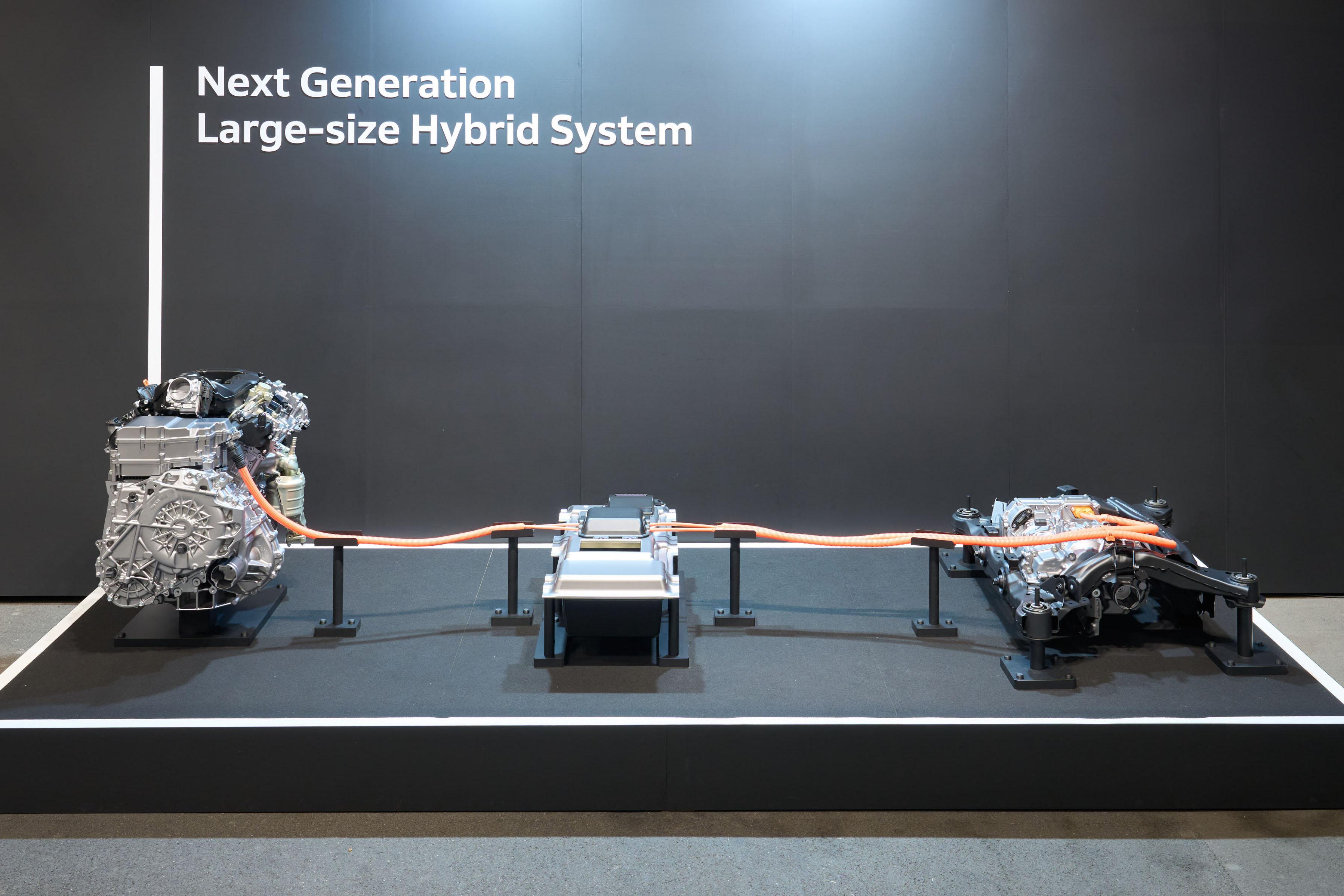
Don’t get your hopes up; this isn’t for a new NSX.
This is aimed squarely at the North American market, designed for Honda’s large, heavy SUVs and utes (think Pilot, or a future Ridgeline). The goal here isn’t S+ Shift sportiness; it’s about delivering the low-end electric torque needed for towing, while using the V6 for efficient highway cruising.
Honda claims this setup will be 30 per cent more efficient and offer 10 per cent better acceleration than its current V6-only models.
It’s an important piece of the global puzzle, but you’re unlikely to see it in Australia.
Finally, a hybrid that fits in the car
The S+ Shift system will debut in the Honda Prelude when it lands in Australia next year. It’s running the 2.0-litre e:HEV system from the Civic, with official specs confirming the electric motor’s 135kW/315Nm outputs.
But the Prelude isn’t just a pretty face. Honda has raided the Type R parts bin, equipping it with the same dual-axis strut front suspension and adaptive damper system. This is a serious chassis, and the S+ Shift gives it the powertrain character it deserves.
But while the Prelude is the halo car, the real money is in SUVs.

Let’s look at the numbers. I’ve dug into the official October 2025 VFACTS data, and the figures are stark. Year-to-date, Australians have bought 160,766 traditional hybrids.
In the crucial SUV segment – where Honda lives – that number is 127,763 hybrid SUVs sold.
Honda’s hybrid sales? A rounding error. The current CR-V e:HEV, while a good drive, is a packaging dilemma. Its battery is stuffed under the boot floor, ruining the cargo space – the one thing an SUV must get right.
The ‘Next Generation Mid-size Platform’ we were shown at the Tech Day proves Honda has listened.

The single biggest change is that the battery and power-control unit have been moved from the boot and are now integrated into a single, slim unit under the rear seats.
This finally gives the next-gen CR-V e:HEV a full-size, flat-floor boot. It’s a simple change that finally gives Honda a fighting chance against the RAV4.
This new platform also gets a 10 per cent weight reduction and a simplified body structure that, cleverly, is designed to flex in a controlled way to “control load on each tyre during cornering”, with the aim of improving steering feel. It will also be paired with a new, more compact electric all-wheel drive (E-AWD) unit.
The EV future: A mix of genius and… questions
Honda’s electric vehicle (EV) future was also on show, and it’s a study in contrasts.
The Super-One, a tiny electric kei car turned hot hatch, is confirmed for Australian release in 2026. It has flared blister fenders, a Boost Mode, and pipes fake engine noise into the cabin. It even uses a motor to create vibrations to simulate an engine. It’s a hilarious gimmick, and on the tight cone-course, it was a hoot.
But it’s a novelty. If Honda Australia prices this EV significantly north of $30,000, it will likely be a niche, cult model rather than a volume-seller in a market being flooded by cheap Chinese EVs.

The real EV future is the Honda 0 Series, built on a new ‘Thin, Light, and Wise’ dedicated platform. The engineering is impressive, with a “thin” battery pack allowing for a super-low floor and a sleek design.
But Honda has made a head-scratching omission: the 0 Series models will not have a frunk (front trunk).
When I confirmed this with engineers, the reasoning pointed towards prioritising the ‘Thin, Light, and Wise’ philosophy – specifically, a low, aerodynamic bonnet and a cab-forward design that maximises interior space. It seems components like the e-axle, steer-by-wire, and HVAC systems are packaged where a frunk would go.
It’s a perplexing decision that prioritises aerodynamic purity over the daily-use practicality that Tesla, Kia, and Hyundai EV owners have come to expect. It feels like a missed opportunity.
CarExpert’s Take
This tech day proved Honda is aggressively fixing the two biggest problems with its current-generation models: boring hybrid transmissions and compromised hybrid packaging.

The S+ Shift system is a brilliant piece of software engineering, saving the e:HEV system from the enthusiast’s scrap-heap and providing a genuine, exciting pulse to the upcoming Prelude and, almost certainly, the next Civic Type R.
And the new 1.5L engine and the redesigned mid-size platform will finally fix the efficiency and packaging woes in Honda’s volume-selling SUVs.
While Honda’s EV future is a mixed bag of clever platforms and questionable packaging choices, its immediate hybrid future is sharp, focused, and – for the first time in a long time – genuinely exciting.
